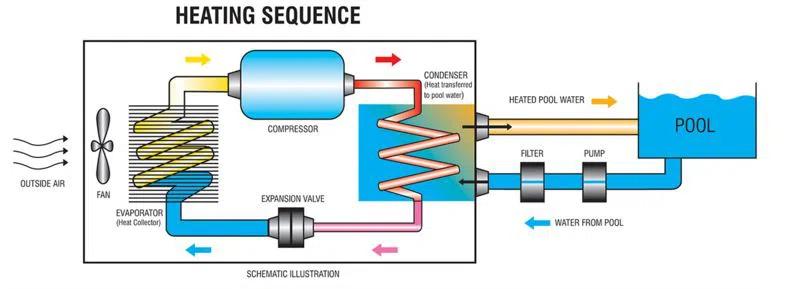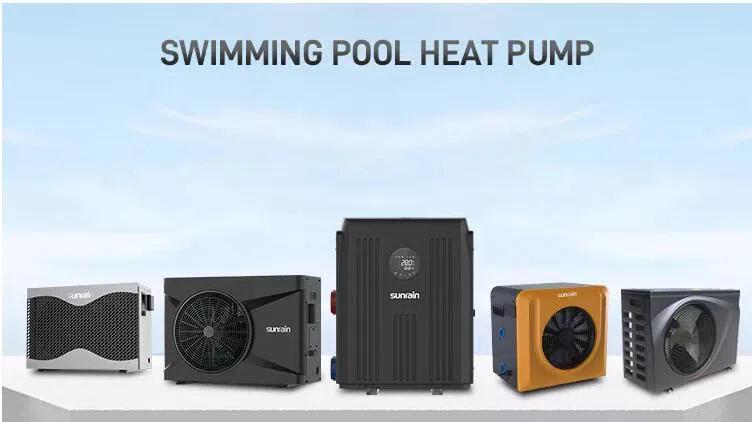It is no secret that pools are an Aussie staple for the Summer time. But, while the kitschy inflatable flamingo and backyard cabana may be relatively cheap to buy, the cost of running an above or inground pool may leave you feeling a little flustered.
A potential solution to keeping those costs down , however, is solar power, whether that be on your roof or in the form of a solar pool pump. Pool Heater Electric

In this Canstar Blue guide, we discuss everything solar pool pumps, from the pros and cons and associated costs to how they work and whether or not they are actually worth installing.
Over the last 12 years SolarQuotes® has steadily built a network of heavily vetted solar installers. Get up to 3 free, no obligation quotes from highly-qualified installers.
A solar pool pump is a dedicated solar power system for your pool filtration needs. A typical set-up for a solar pool pump includes a solar panel array, a solar pool pump, cartridge pool filter, controller and all of the accessories needed to convert solar power into usable electricity.
Some systems will combine the solar pool pump with a heat exchanger component, so the heat generated from your solar pool pump is used to warm up your pool. This essentially makes it a solar pool heater pump, not only filtering the water but ensuring it is warm as well.
Just like regular pool pumps that are connected to the grid, solar pool pumps work to circulate and filter the water in your pool. The only difference is that solar pool pumps use power from the sun as opposed to electricity from the grid.
Essentially, pumps work by drawing water from the pool through the skimmers and drains, removing large debris in the process. When the water reaches the pump’s impeller, the pressure forces the water through a filter, catching debris that wasn’t removed by the skimmer baskets.
After the debris has been removed, water is treated (and sometimes heated – depending on the system) before being returned to the pool.
There are a couple of factors to consider when figuring out how many solar panels would be needed to power a solar pool pump.
An easy way to determine how many solar panels are needed to power your solar pool pump is to find out what the wattage of the pump is versus the average wattage output of the solar panels. Then, divide the wattage of the pump by the wattage output of the panels to find a rough estimate of how many panels you would need. For an accurate evaluation however, it is best to consult with a licensed solar installer or pool professional who can recommend a solution based on your individual circumstance.
Unfortunately, you can’t hook an existing pool pump up to a few solar panels and have it working. Typically to go to solar, you’ll require a whole new system.
The only exception to this would be a plug-in pool pump that connects to your home via an electrical outlet but this too comes with limitations. If you have an AC pool pump then you’ll need to purchase several accessories to make it compatible, which might actually be more expensive than just buying a new solar pool pump.
A DC pool pump may be more easily configured as it is able to draw energy directly from the solar panels without an inverter. However, it is always best to consult with a professional, to ensure that everything works as it should and doesn’t ending up costing you more in the long run.
Another option is to use the solar energy being generated by your home solar power system to offset the cost of grid power running the pump. This would mean that your pool pump would still technically be run on solar power, just not directly through the pump’s system. This would also save you from buying a whole new pool pump system, especially if there is nothing wrong with the existing one. A downside, however, is that it might still draw power from the grid on days where solar energy production is not as high.
Here are some of the cheapest solar-specific deals from the retailers on our database. These costs are based on the Ausgrid network in Sydney but prices will vary depending on your circumstances. We show one product per retailer, listed in order of lowest price first. Annual price estimates assume general energy usage of 3900kWh/year for a residential customer on a single rate tariff. Price estimates exclude solar feed-in tariff credits. These are products from referral partners†. Our database may not cover all deals in your area, and please check retailer websites for up to date information.
Here are some of the cheapest solar-specific deals from the retailers on our database. These costs are based on the Citipower network in Melbourne but prices will vary depending on your circumstances. We show one product per retailer, listed in order of lowest price first. Annual price estimates assume general energy usage of 4000kWh/year for a residential customer on a single rate tariff. Price estimates exclude solar feed-in tariff credits. These are products from referral partners†. Our database may not cover all deals in your area, and please check retailer websites for up to date information.
Here are some of the cheapest solar-specific deals from the retailers on our database. These costs are based on the Energex network in Brisbane but prices will vary depending on your circumstances. We show one product per retailer, listed in order of lowest price first. Annual price estimates assume general energy usage of 4600kWh/year for a residential customer on a single rate tariff. Price estimates exclude solar feed-in tariff credits. These are products from referral partners†. Our database may not cover all deals in your area, and please check retailer websites for up to date information.
Here are some of the cheapest solar-specific deals from the retailers on our database. These costs are based on SA Power network in Adelaide but prices will vary depending on your circumstances. We show one product per retailer, listed in order of lowest price first. Annual price estimates assume general energy usage of 4000kWh/year for a residential customer on a single rate tariff. Price estimates exclude solar feed-in tariff credits. These are products from referral partners†. Our database may not cover all deals in your area, and please check retailer websites for up to date information.
A solar pool pump system can cost anywhere from under $2,000 up to about $5,000. This includes the actual solar pool pump, the solar panels, installation costs and other accessories needed to run the pump effectively. The solar pool pump itself, though it is generally pretty affordable, ranging between $250 and $750 for a system.
If you compare this with the cost of running a pool pump using electricity from the grid, the payback period is about three to seven years. However, it is important to keep in mind that the pool pump itself only usually has a warranty period of about two years so it may need to be replaced in this time.
The benefits of installing a solar pool pump include:
There are clearly benefits to installing a solar pool pump however, there are some downsides as well. For example, the solar panels will likely outlive the pump which means that it’ll have to be replaced – eating into your cost savings.
Another issue would be whether you have sufficient sunlight to generate the required amount of solar power and if there is large enough area to mount these panels. While there is flexibility with this, it’s not like the panels can be squished and made fit into an area that is far too small. It also would not be able to run at night, so you would have to make the most of the energy generated in the daytime.
The benefits to having a pool pump powered by solar are clear. While it is not a cheap investment to begin with, there is potential to save real money in the future.
However, Solar pool pumps are not the only way to have a pool pump powered with solar energy. If you already have a solar panel installed on your roof, or are looking to get one, consider if you can use this energy for your pool as well as your home. It may even work out to be more efficient because excess electricity can be fed back into the grid from a panel system. Solar pool pumps don’t have the capacity to do this.
If you don’t yet have solar, but are interested in installing it, then be sure to check out our annual customer satisfaction ratings for solar installers. Here we list the brands that Aussie consumers have rated top-notch in the field.
Image credits: Suz7/Shutterstock.com, ludinko/Shutterstock.com, Dardalnna/Shutterstock.com
© Copyright 2022 Canstar Blue Pty Ltd ACN 142 285 434 All Rights Reserved
facebook twitter instagram youtube linkedin

Electric Heat Pump Water Heater To our knowledge, all information in articles on the Canstar Blue website was correct at the time of publication. This information may have changed over time. Refer to the product fact sheet (or relevant similar documentation) before making any purchase decision. Canstar Blue's website terms and conditions apply.